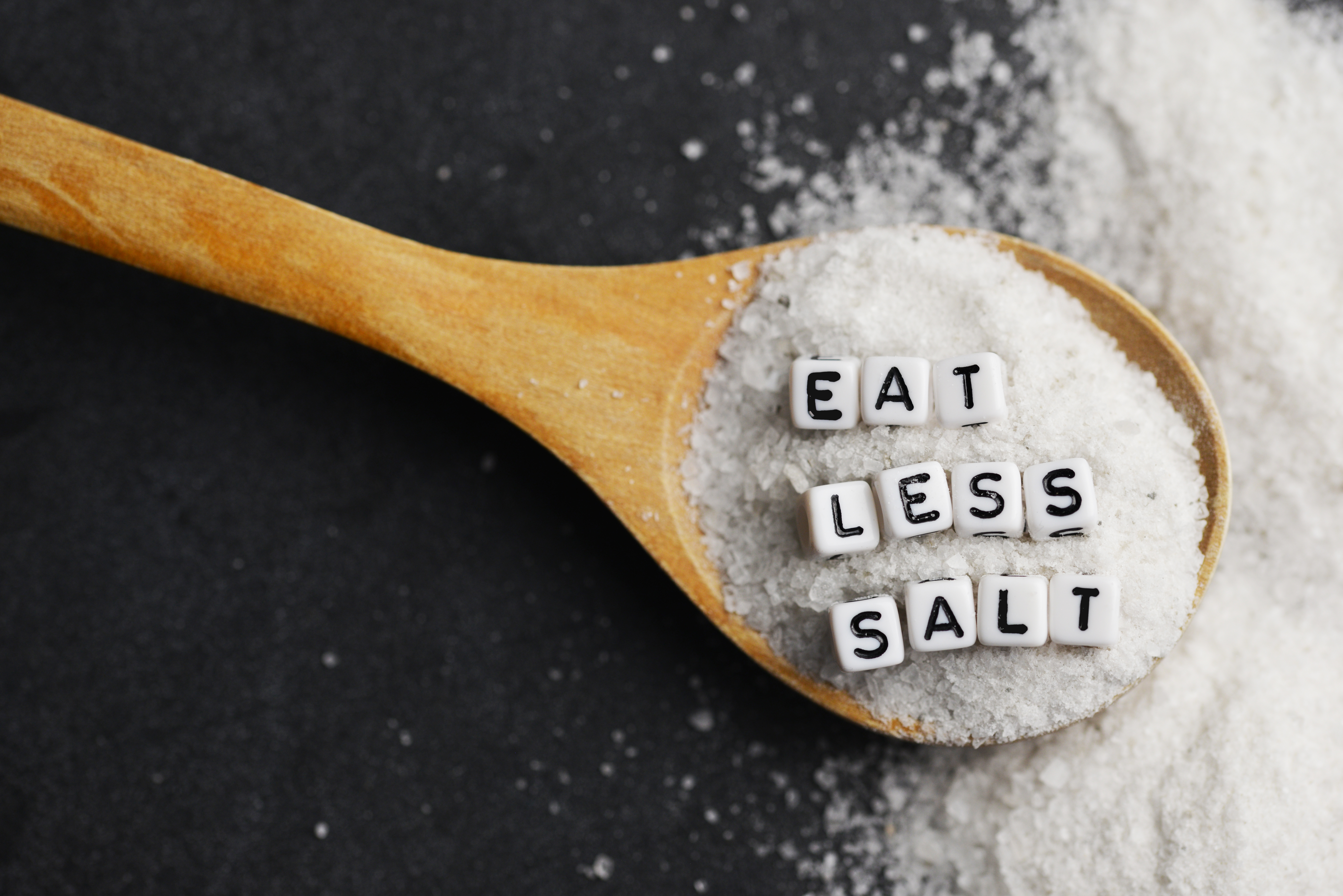
Many people now know that eating too much salt is bad for their health and are looking to cut down. Taking control of your salt intake is easy. Start by reading food labels, making healthier choices and when you are preparing food at home use more herbs and spices and less ready-made stocks and sauces.
A recipe for a tastier and healthier life
| Try to use more | Try to use less |
| Herbs
Spice Lemon Pepper Chilli Garlic Ginger Low salt stock |
Bacon
Cheese Ready-made stock Tomato ketchup Mustard Soy sauce Ham Ready-made sauces |
With the average person in the UK reported to eat 8g of salt each day. The maximum recommended daily allowance of salt is 6g for adults and children over 11 years, younger children require less.
| Age | Maximum daily amount of salt |
| <1 year old | <1g salt a day |
| 1 – 3 years | 2g salt a day |
| 4 – 6 years | 3g salt a day |
| 7 – 10 years | 5g salt a day |
| 11 years and over | 6g salt a day |
But I don’t add any extra salt to my food…
Even if you aren’t adding salt at the table or during cooking you could still be eating too much, as around 75% of the salt we consume has already been added to our foods by the food industry. We know that foods like ready meals and cheese can be high in salt but foods that don’t taste salty like bread and breakfast cereals, can also be a source of salt. Effervescent vitamin supplements can contain up to 1g of salt per tablet, so it’s worth considering changing to a non-effervescent tablet.
So why does this all matter?
Eating a diet that is high in salt can increase your blood pressure, a risk factor for cardiovascular disease, which is a major cause of UK mortality. It is estimated by the Department of Health that reducing population salt intakes by just 1g, could prevent 4,147 premature deaths and save the NHS £288 million every year.
Here are some top tips from our Company Nutritionist Louise Goodall on how to reduce salt in your diet:
Top Tip #1:
We still want to eat great tasting food! Try using herbs, spices, black pepper, chilli, lemon, garlic or fresh ginger to flavour your food. Instead of reaching for the salt, experiment with different flavours.
Top Tip #2:
Make food from scratch – ready meals, processed foods and ready to use sauces are usually higher in salt. Where possible, cook your food from scratch so you know exactly how much salt is in it.
Top Tip #3:
It is important be aware that some products that don’t taste salty may contain more salt than you think. The packaging of food can help us to identify lower salt options! Take a look at the back of the packet to find out more about your food.
Top Tip #4:
Take the salt cellar off the table – out of sight means out of mind! Around 75% of the food we eat already has salt added to it. Even if you don’t add salt at the table, you could already be eating too much.
Top Tip #5:
Small tweaks to your favourite foods can make a big difference. Choose vegetable toppings on your pizza instead of pepperoni or more cheese and limit the toppings to your burger that can be high in salt e.g. bacon or cheese.


